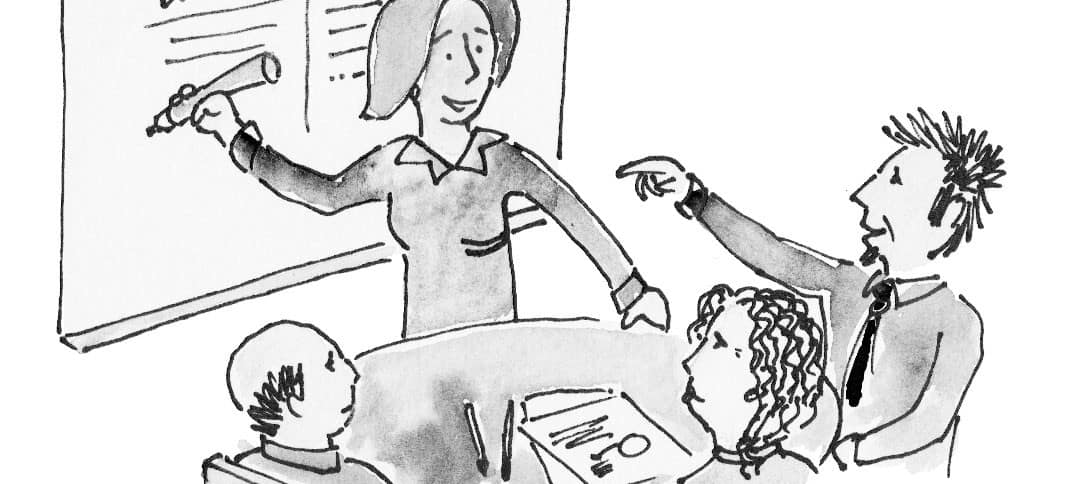Customer-centricity is essential to building meaningful relationships with customers. And ultimately, your organisation’s success.
In this interview, Deborah Clarke, Director of UX at CarTrawler talks to Sofia Quintero, Founder at NomNom. They discuss the interdependent roles of User Experience and Customer Experience, and why testing and communication are critical keys to organisational success.
Hi Deborah! To get started, why don’t you tell us a little bit about CarTrawler and your role there?
My role is Head of UX but in reality, UX as a function in CarTrawler is actually more like a full product development team. I currently manage a team of Engineers, Researchers, Product Managers and Designers, who are all working towards producing and creating the best possible product that we can for our users.
It’s actually quite refreshing to have UX as a core part of what we do – rather than being restricted to the design discipline. In this way, everyone on the team owns UX and it has become synonymous with Product Development.
Our mission as a company is about simplifying how the world travels through innovative technologies. I suppose you could say we’re sort of like a hybrid of a travel company and a technology company.
What’s it like to run product and design and UX in such a large company as opposed to, say, early-stage start-ups that have a smaller structure and fewer people?
I think when you’re in a small team, it’s very easy to get everyone to buy into the same purpose, mission and ideas. But as you broaden the team and the organisation itself grows, broader commercial mandates and objectives come into play.
I think that’s when it becomes even more important to focus on clarity of purpose and efficient delivery. More specifically, crafting a compelling roadmap and building a culture across the team around what we create and how we build.
How do you keep your mission and vision aligned with all your teams in a complex, multi-faceted environment?
‘Customer-centricity’ is a long-term goal for any organisation in that it takes a long time to build relationships with customers that are meaningful. Most businesses are inherently focused on shorter-term goals like revenue and profitability which can often challenge this thinking. However, short-term commercial goals are indeed necessary to get us to longer-term customer-centricity!
I think as you grow in an organisation, it’s about being clear about what it actually means to embody the customer and drive customer-centric thinking throughout the business. For me, it ultimately comes back to understanding what the end-customer really wants and building on that.
What is your definition of UX and how, if at all, is it different from customer experience?
I think customer experience is actually distinct from the user experience, in the same way that an offline interaction is different from an online interaction. When we craft our products, we do need to think about both the offline and the online experience. CX includes every touch-point a customer has with your brand, whether it’s contact via phone, in person or online. It’s really all-encompassing.
Whereas UX is specifically focused on the online experience that aims to actually make the product, website or app easy and enjoyable to use. I suppose that the distinction is there, but customer experience also encapsulates user experience and the two are inextricably linked.
For example, if a user experience includes an easy-to-use website when purchasing travel along with an app that helps with the journey, but the experience when reaching the customer service desk is poor, then the overall experience could be viewed negatively. Conversely, if you find it difficult to purchase travel on the website, you might never actually even get to the customer experience step. So I think the two need to be woven together in order to give customers a consistent experience, whether it’s online or offline.
Do you have within your organisation, a team that is focused on overall customer experience as well as the user experience, and do they overlap?
We have a UX Team, which is our Product Development Team, and then we have what we call our Customer Centre of Excellence (CCE). The latter handles most of the responsibility for the CX piece. Interestingly enough, however, our CCE recently produced a customer journey map to document what our customer experience actually involves – mapping all of the departments that actually affect each touch-point of that customer journey.
The most fascinating thing about this is that while one specific business unit is technically deemed responsible for customer experience, the customer journey map revealed that in fact, every single other department in the business also has influence on what that customer experience is going to look like in the end.
So rather than saying, “Yeah, we have the perfect solution,” I think sometimes, it’s around surfacing what you’ve learned and thinking about the ways in which the different business units are actually driving change within a customer’s experience. For instance, how Finance, Marketing or even just hiring the right people have as much of an impact and in some cases more of an impact on our customers. It’s about thinking that through and viewing things through a different lens.
So while we take responsibility for both within the organisation and within different departments, it’s actually incumbent upon all units and departments to understand what customer and user experience mean in practice.
What advice would you give to someone that is just starting their career in UX and may want, at some point in the future, to join a larger organisation like yours?
I think my advice is kind of two-fold – specifically in terms of UX and more generally, in terms of how we operate within these larger-scale organisations.
If we talk about UX specifically, I think the first thing I would say is work on the craft of understanding your end-user or customer. Because ultimately, you can’t get to where you’re looking to go without actually having an inherent passion or drive to understand what an end-user or a customer is actually looking for. That’s the foundation of engaging people with product, building things that they actually need, understanding why they need some things and not others. It also encompasses an understanding of the successes and failures of business – it’s as much about learning as anything else.
On a broader scale, certainly something I’ve learned through my own experience is the importance of mastering the art of efficient creation. I think, all too often, it’s very easy to get caught up in the research and forget to act. In reality, sometimes you just need to act because ultimately today’s digital world is moving at such a pace that we’re actually all struggling to keep up. The expectations of a user are changing every single day.
Recognize that we are operating in an environment that is constantly changing and evolving. The sooner you get things out there – and learn what works and what doesn’t – the better off you’re going to be.
Are there any common mistakes that people tend to make at the beginning of their careers that those reading this might be able to recognise in themselves?
Sure. I’ve seen lots of people thinking that they have the right solution without actually thinking about the end-user. Or embedding and investing so much into one area without thinking about the bigger picture. I also think getting caught up in the commercial reality can be negative to the creative process.
At CarTrawler, we do a lot of A/B testing on our products because we hold the philosophy that testing is actually for learning and the future success of our products. In other words, if you were to strictly look at A/B testing within a commercial environment, what people start to think about is the wins or the losses that come out of the A/B test.
So they start to say, “Oh, well, that led to an increase of X% in conversion,” and it’s all about whether that user converted or not. Sure this is an important success metric to measure, but sometimes it’s the losses that are actually our most valuable learning experiences. The more that we put the things that we’ve created out there and have them used and tested, the more we’ll learn. The future success of our products is dictated by the speed of our delivery and how our users respond.
Do you have any other advice or insights you’d like to share with our audience?
Yes, one final point. When we think about UX and CX we need be forward thinking about the integrated experiences they are – what it means to contextualise a customer’s or user’s experience in real time.
Phones are the devices that travel with us and therefore bridge the gap between UX and CX – they can tell us when to leave based on traffic conditions, order our coffee on the way to work, pay for our groceries through one tap – hubs of frictionless experience.
About CarTrawler: CarTrawler (www.cartrawler.com) is the world’s leading B2B technology platform. They build high-yield partnerships for travel businesses such as airlines, online travel agents and accommodation providers by connecting their customers with car rental, private transfers, bus and rail connections all over the world. CarTrawler also owns and operates Cabforce, Holiday Autos and arguscarhire.com brands and is located in Dublin, Ireland, with additional offices in Boston, London and Helsinki.
About Deborah Clarke: Deborah is the Head of UX at CarTrawler. Learn more about Deborah here.
About NomNom: NomNom is all your customer feedback and user research in one place. Learn from customer faster and share insights with your team easily. Learn more about NomNom here.





